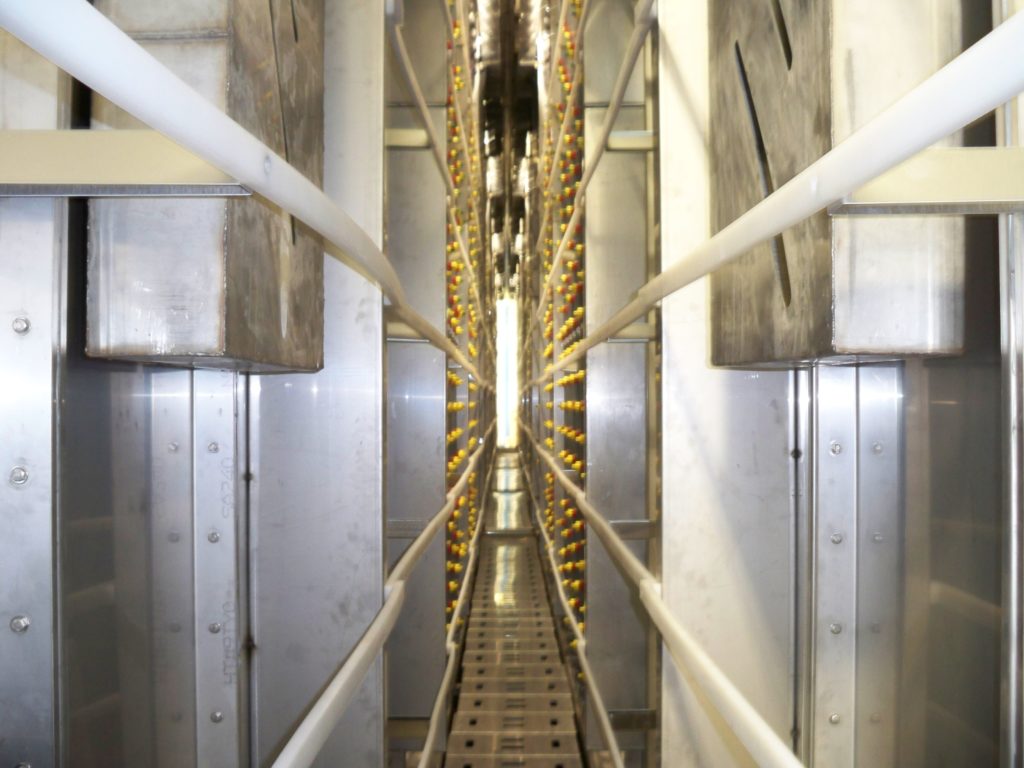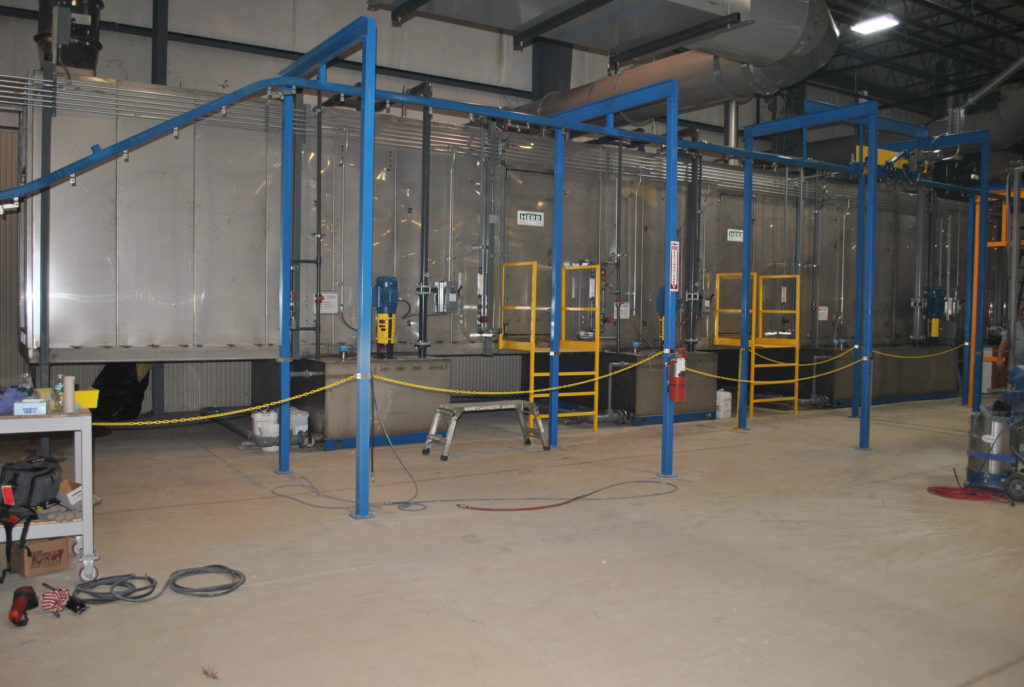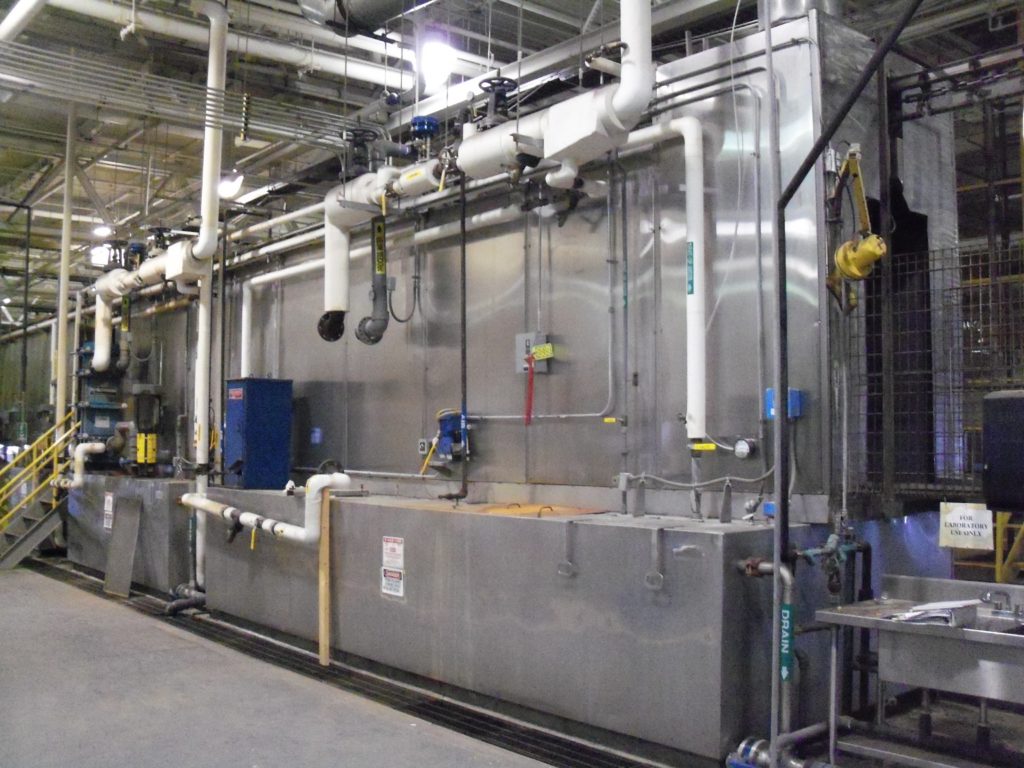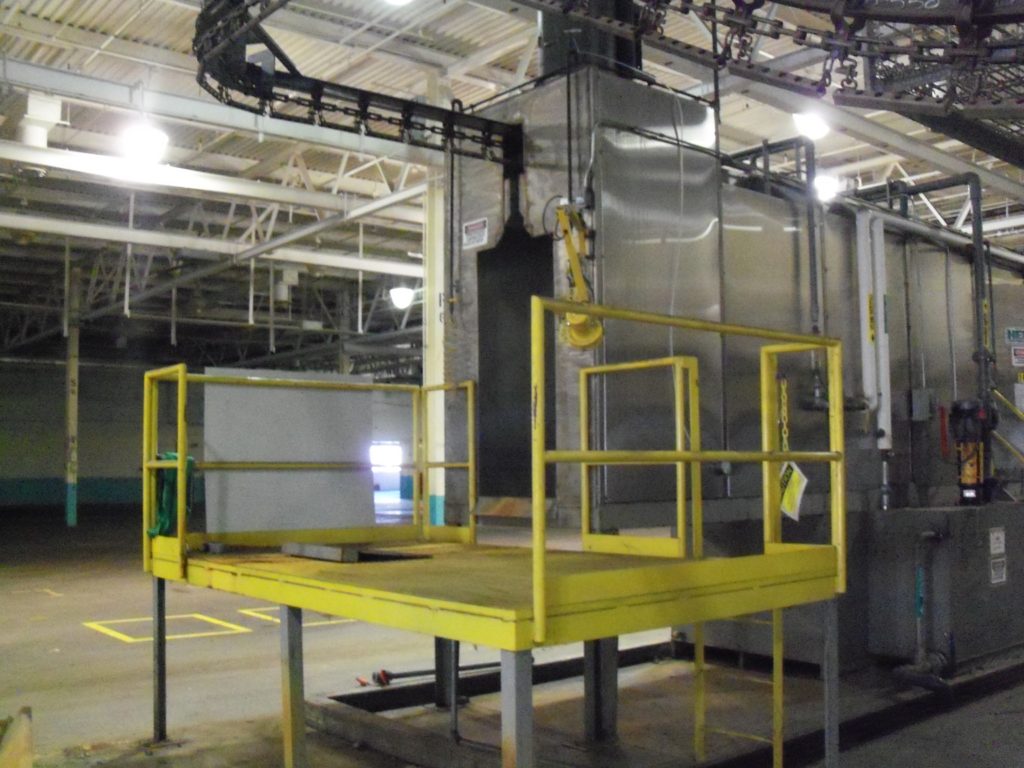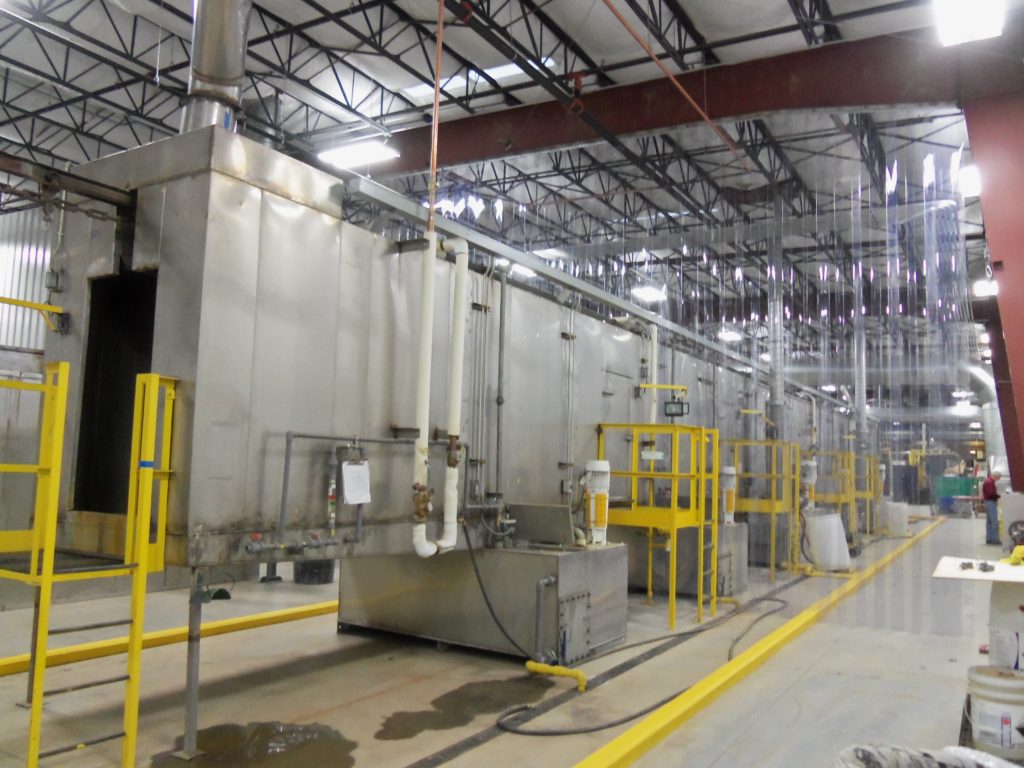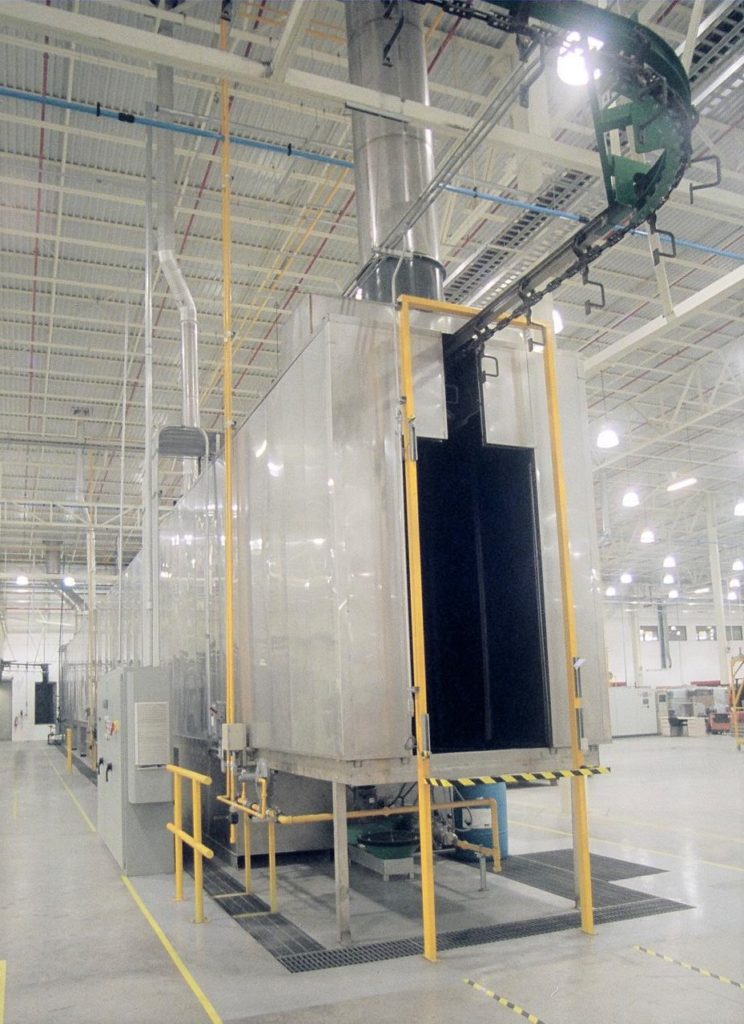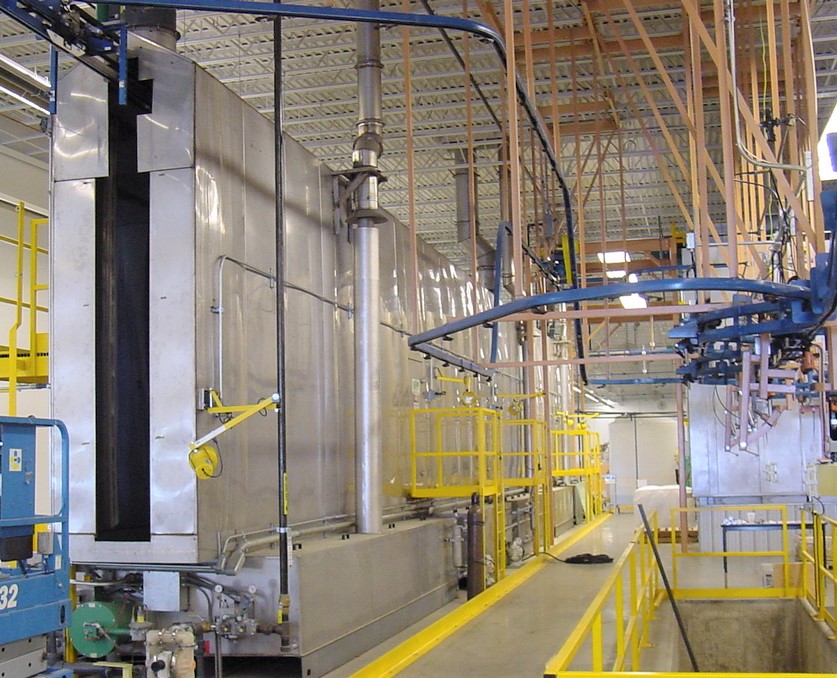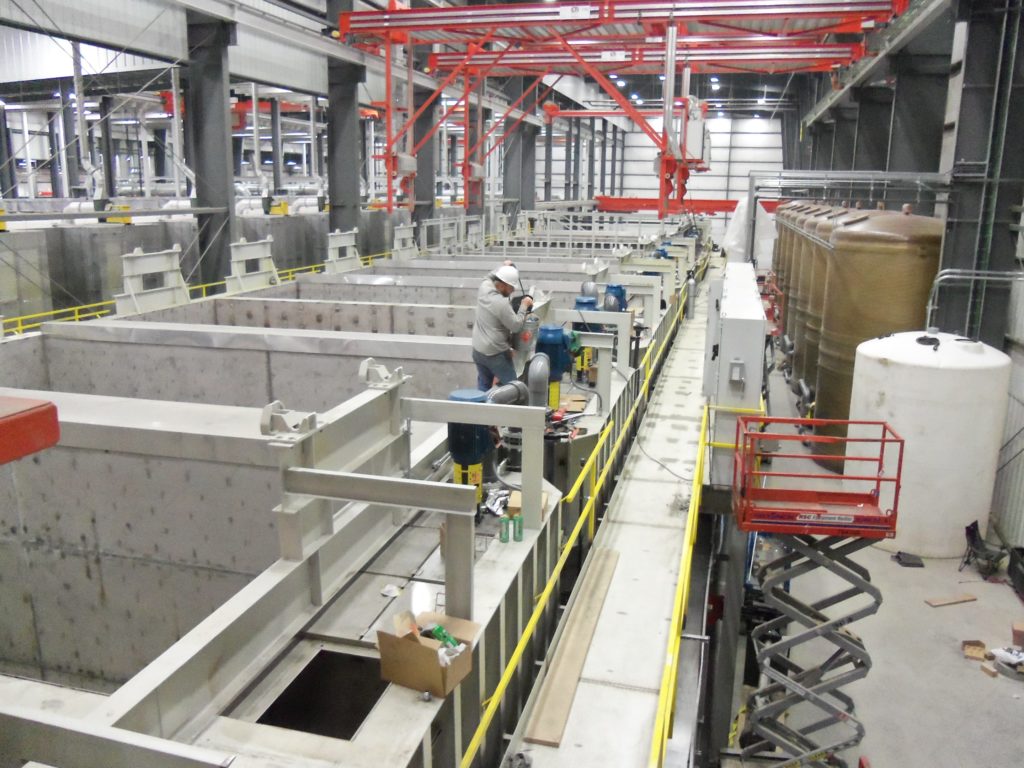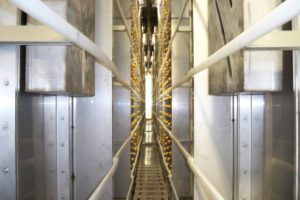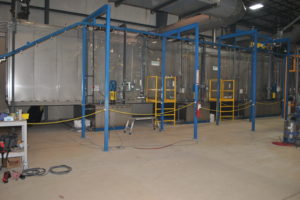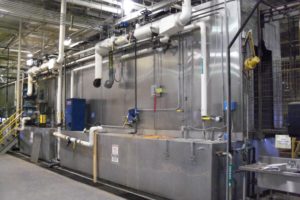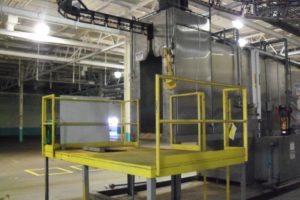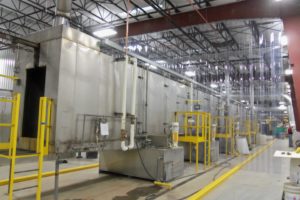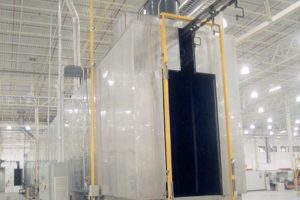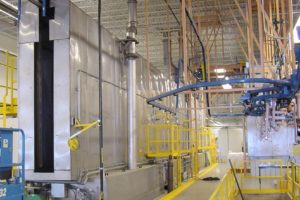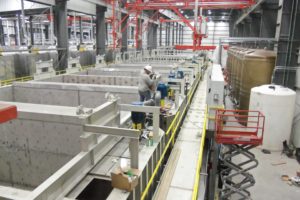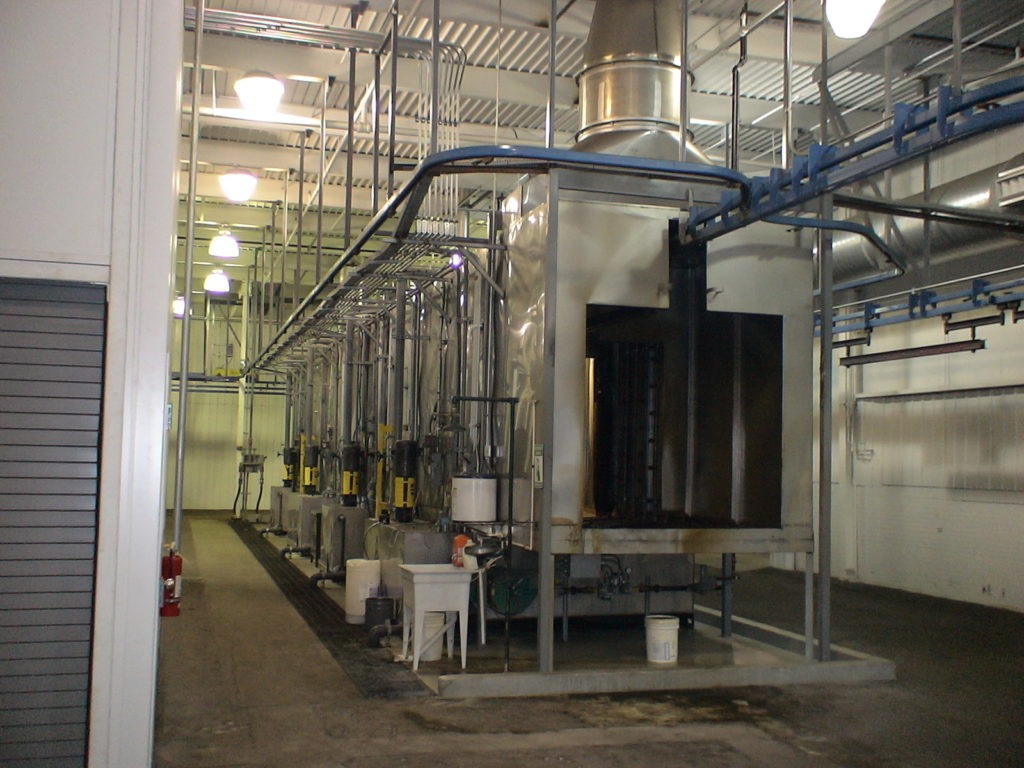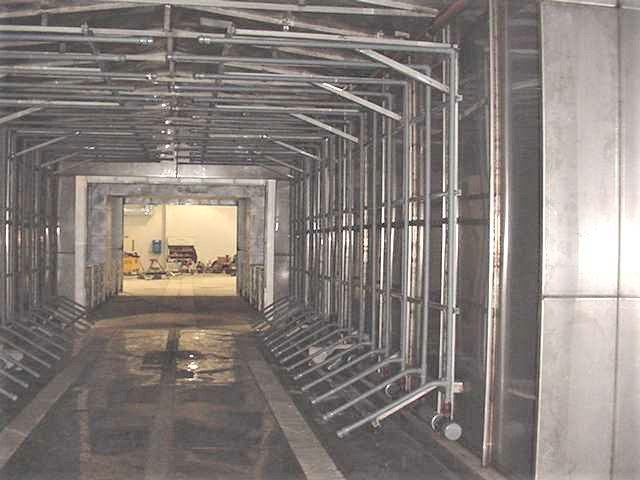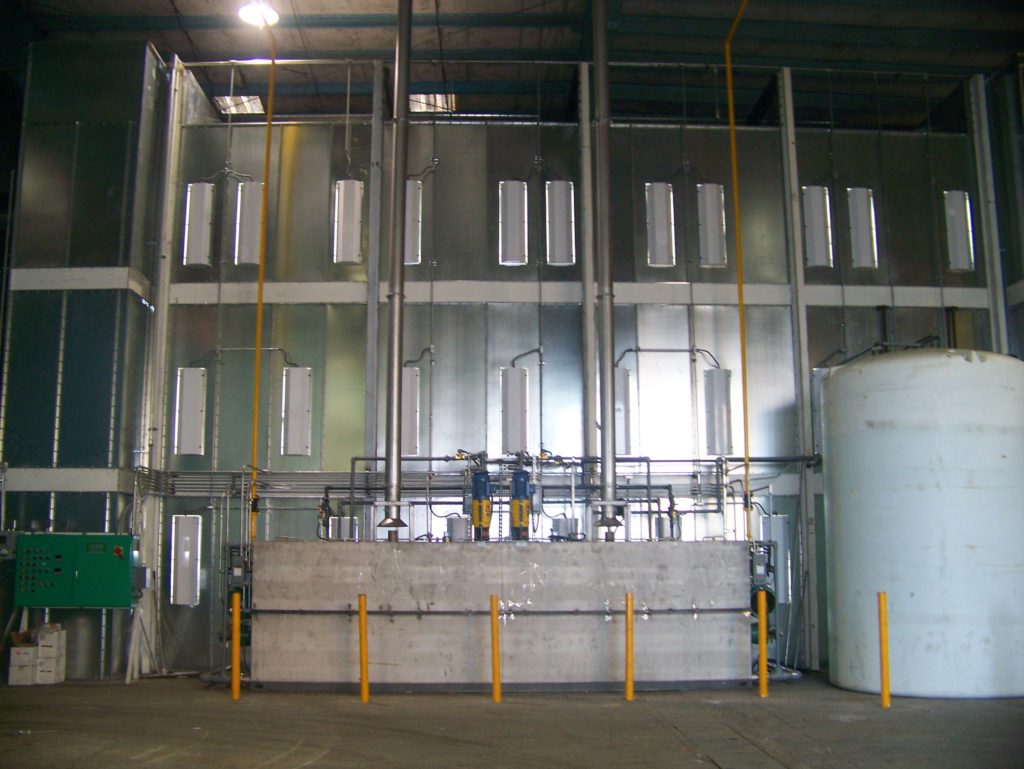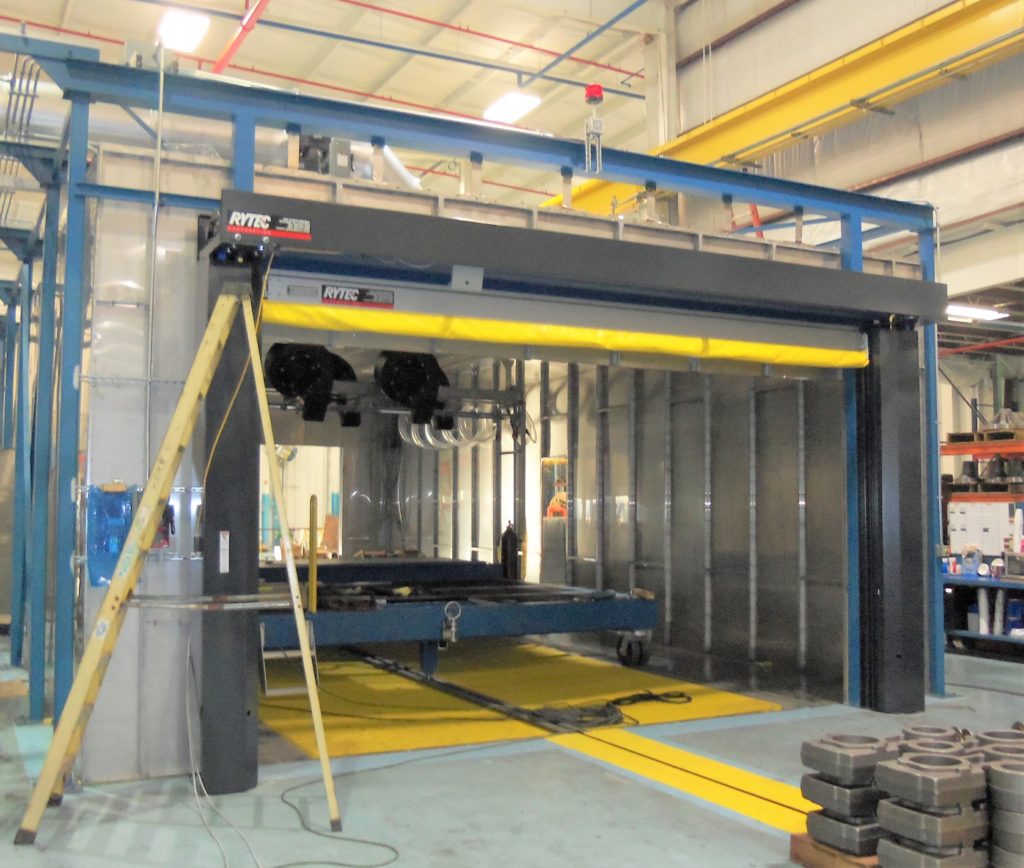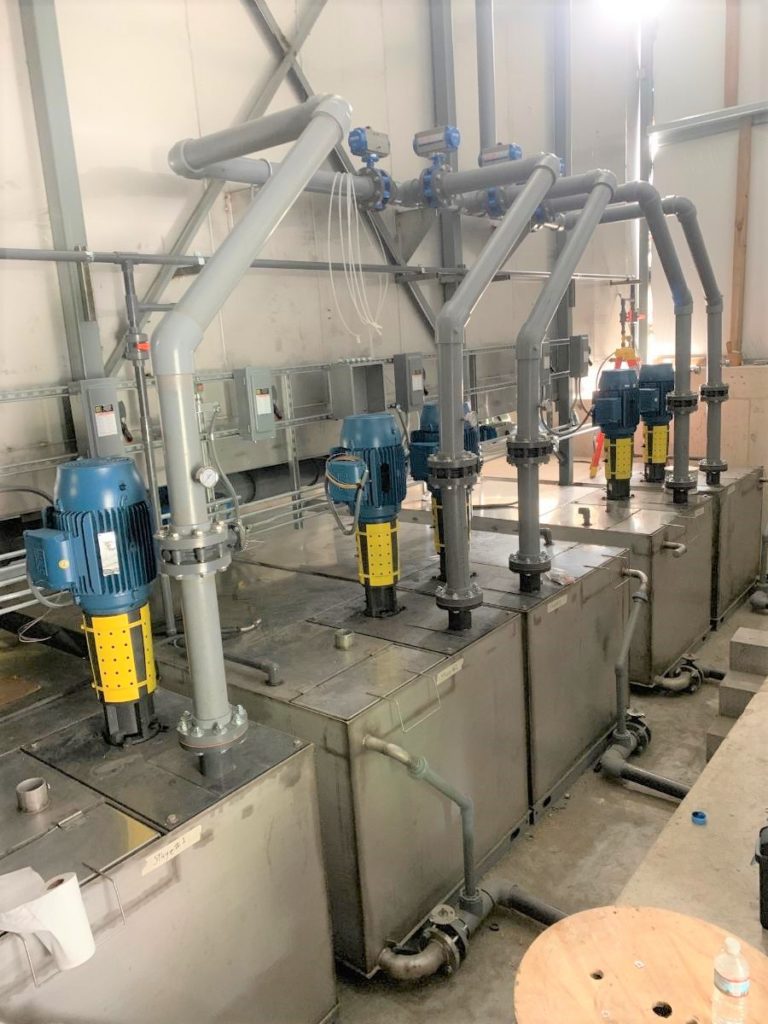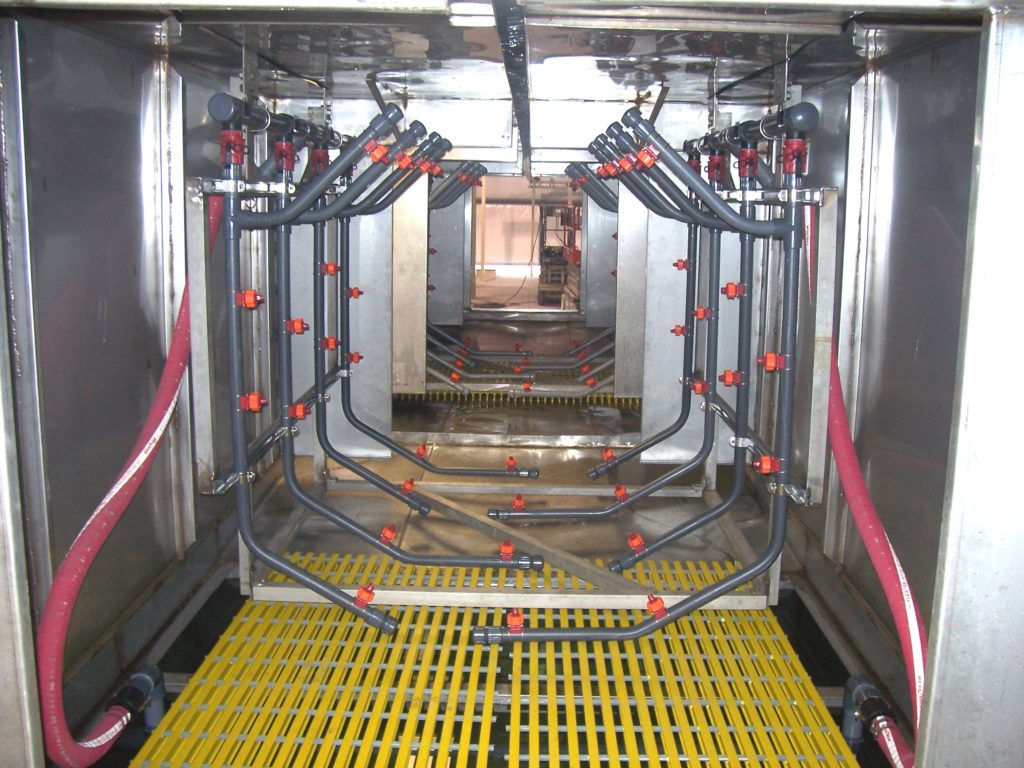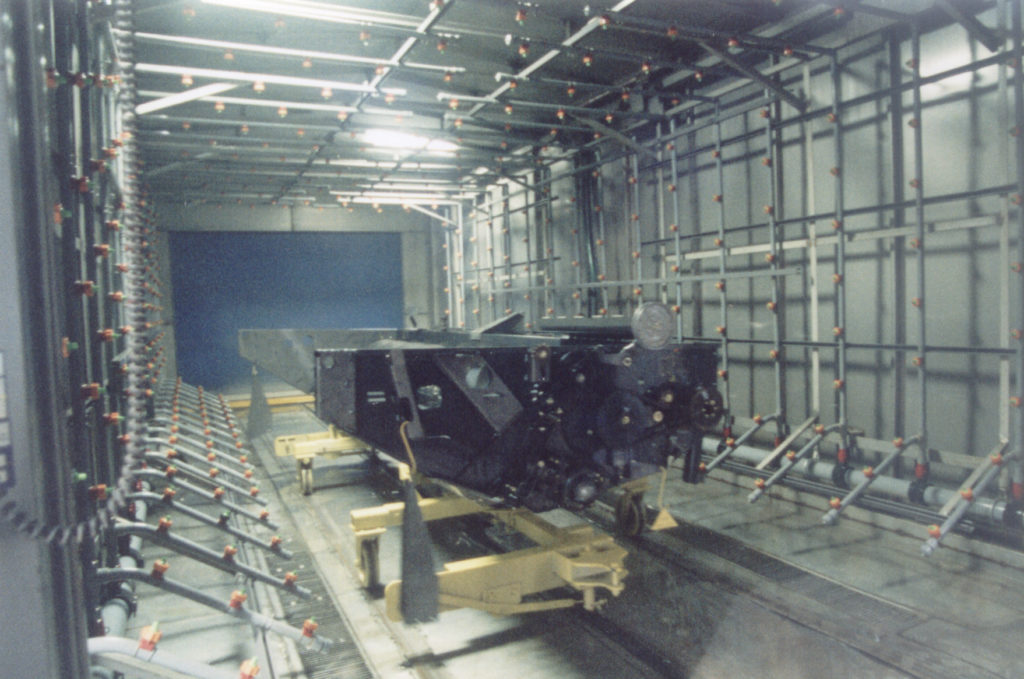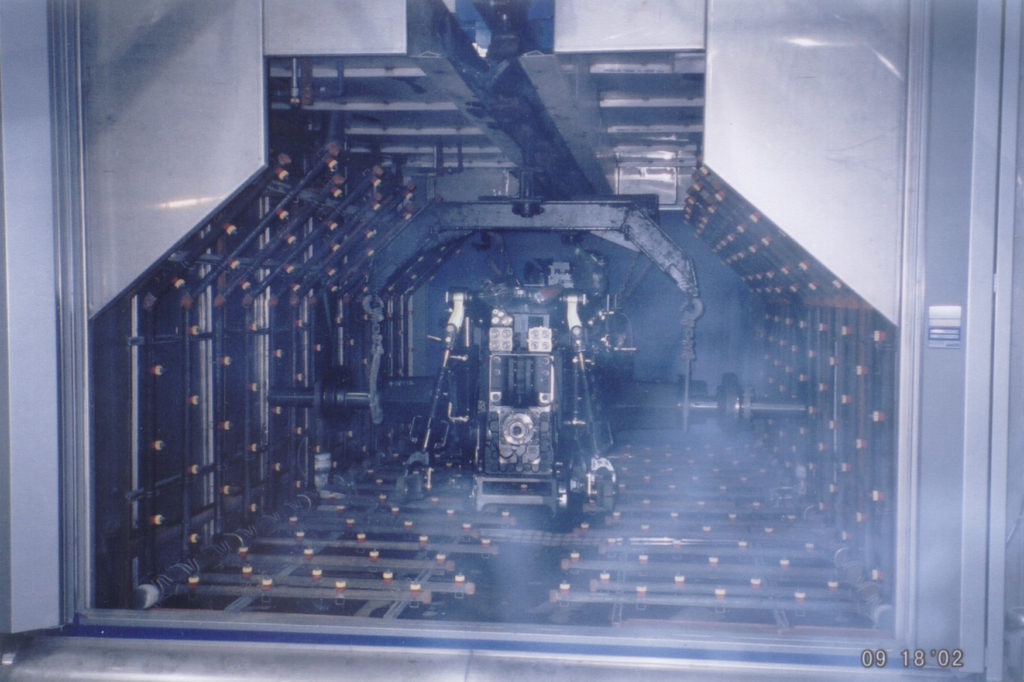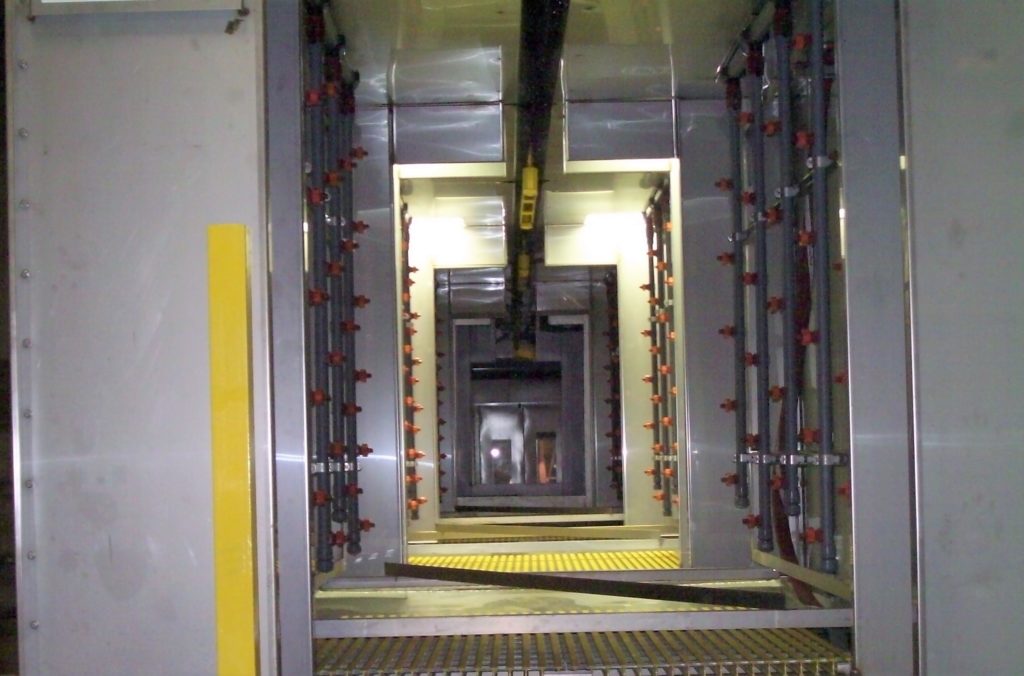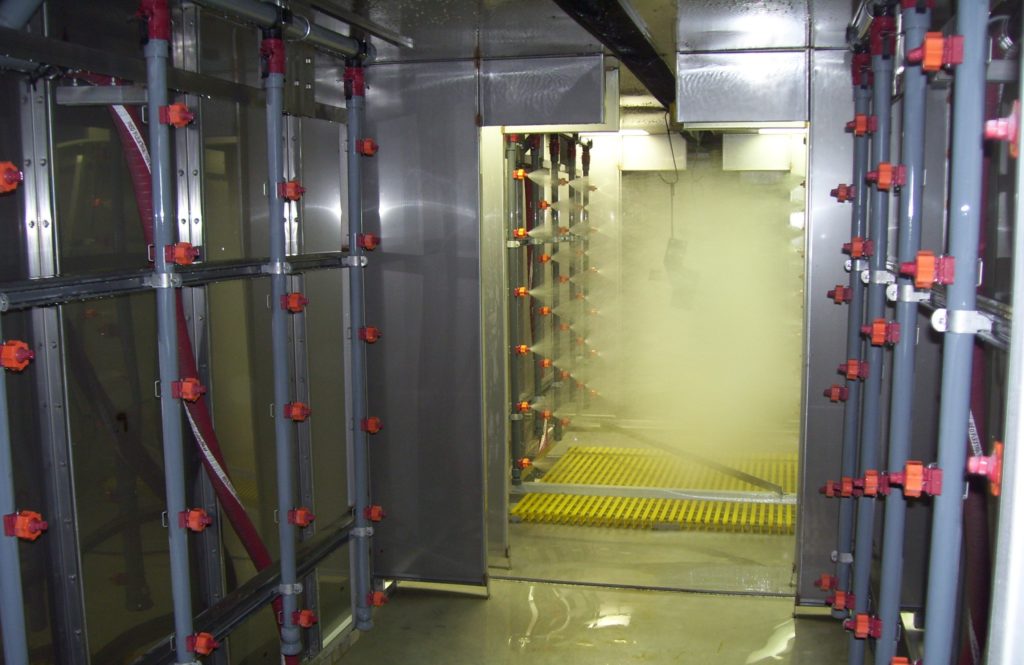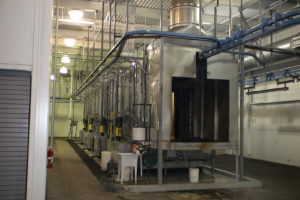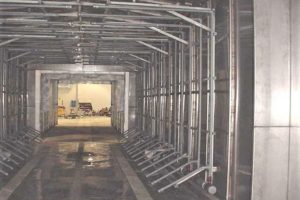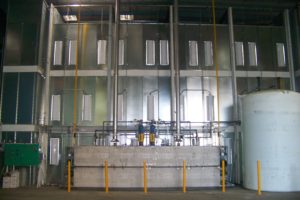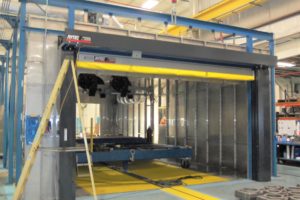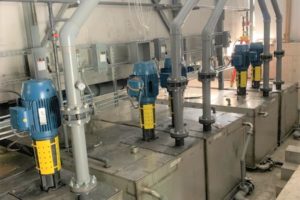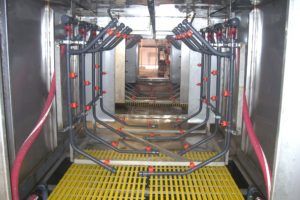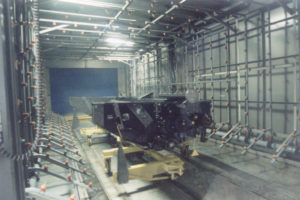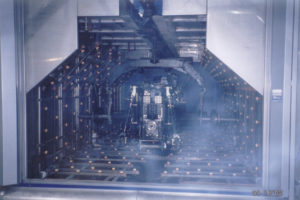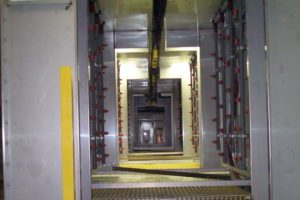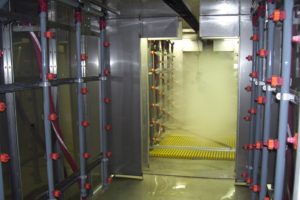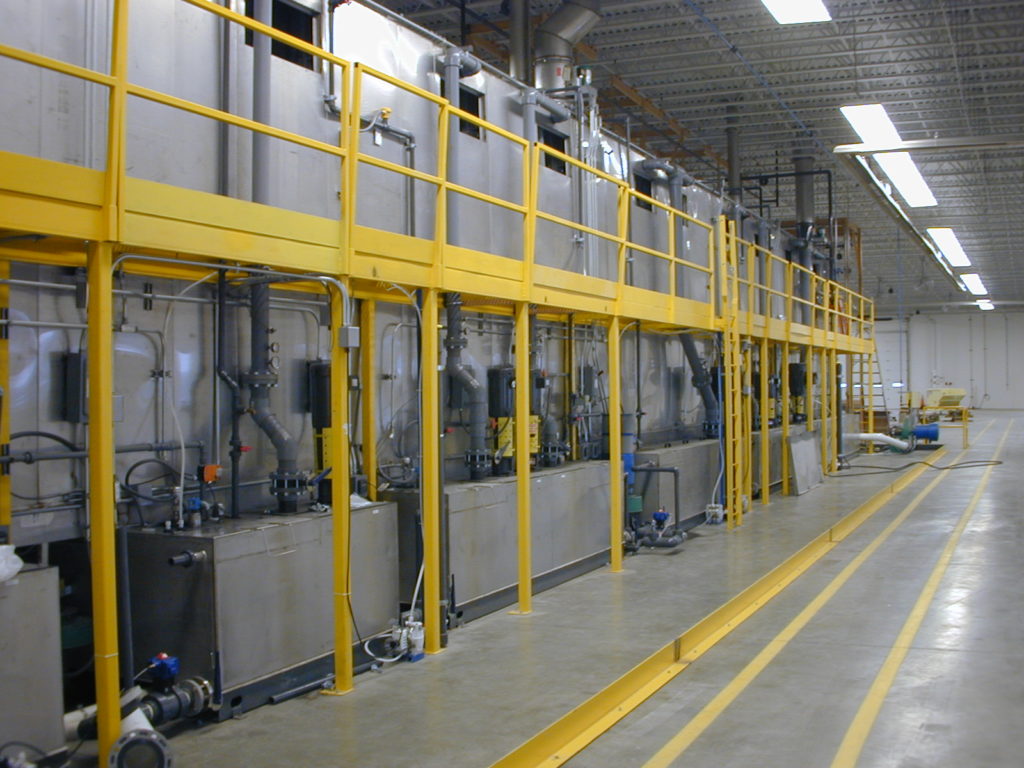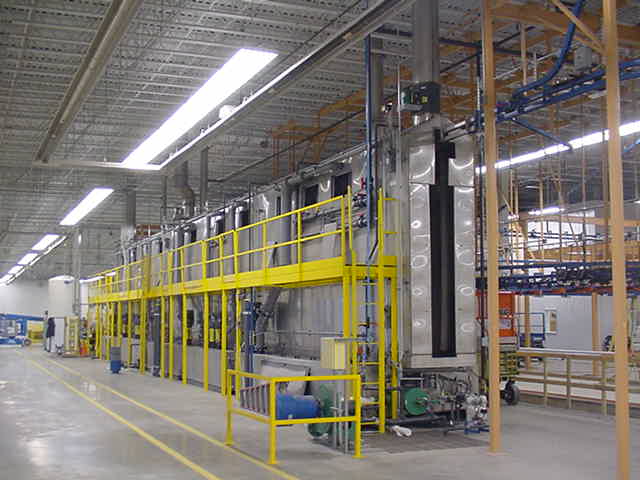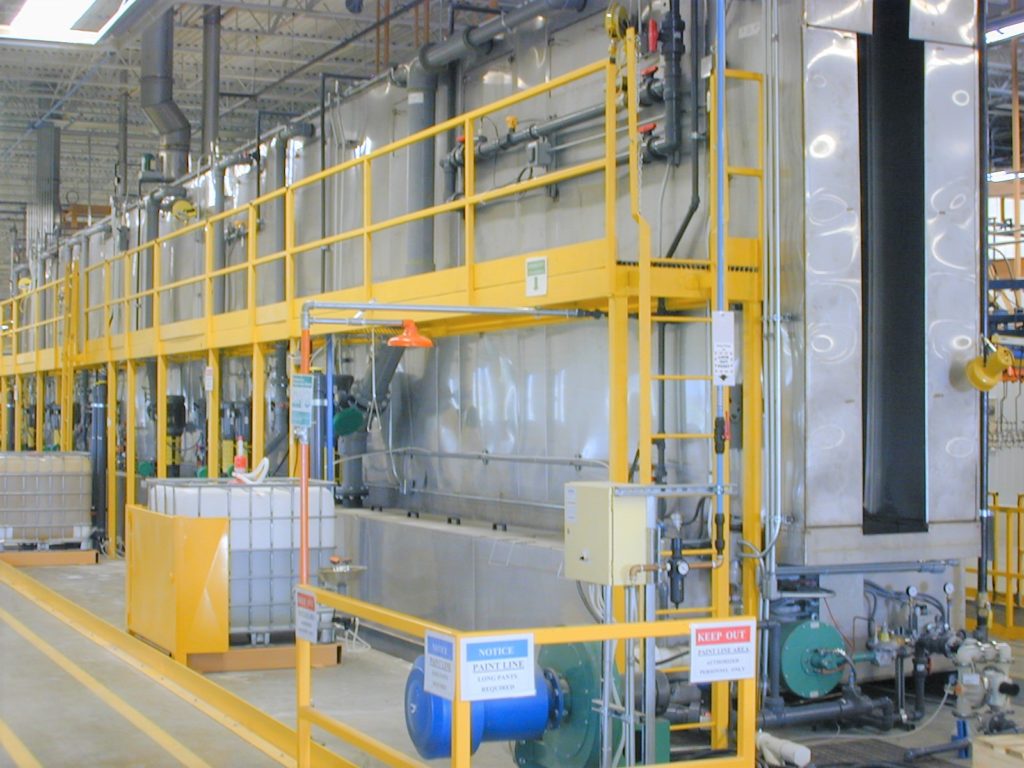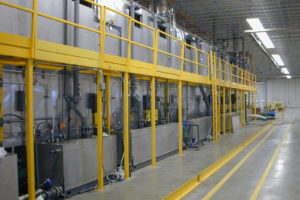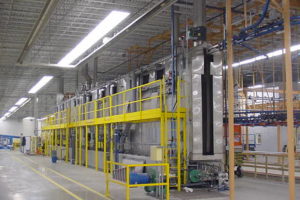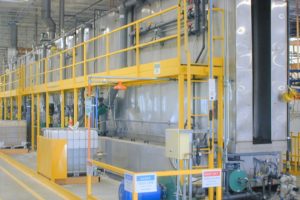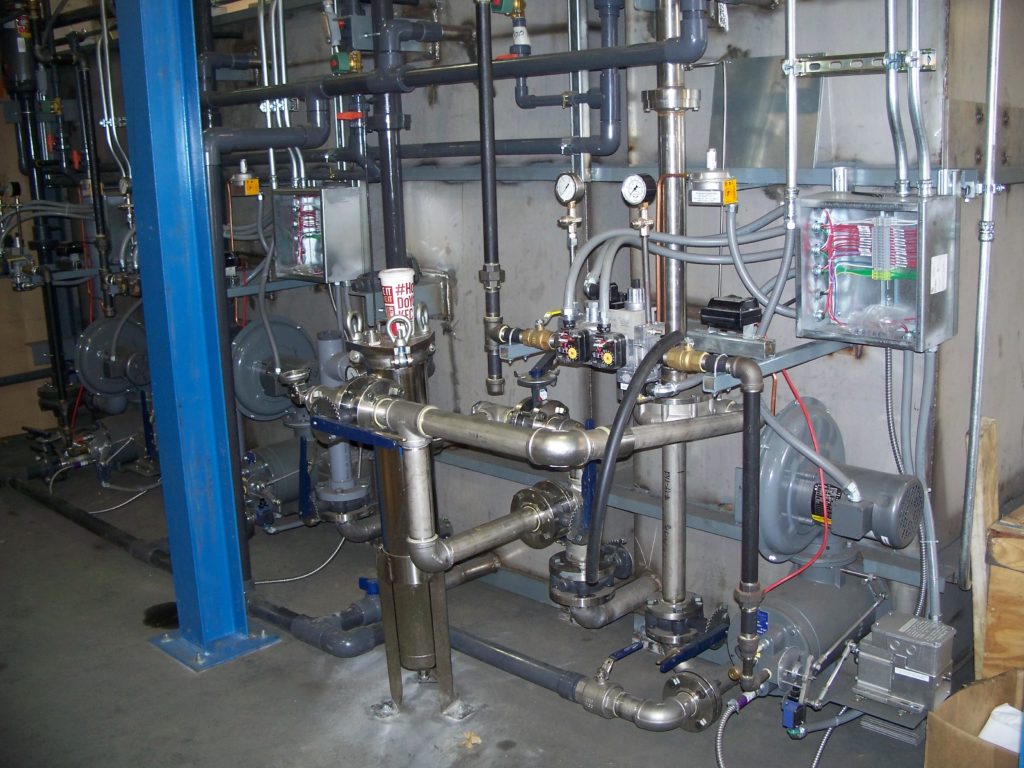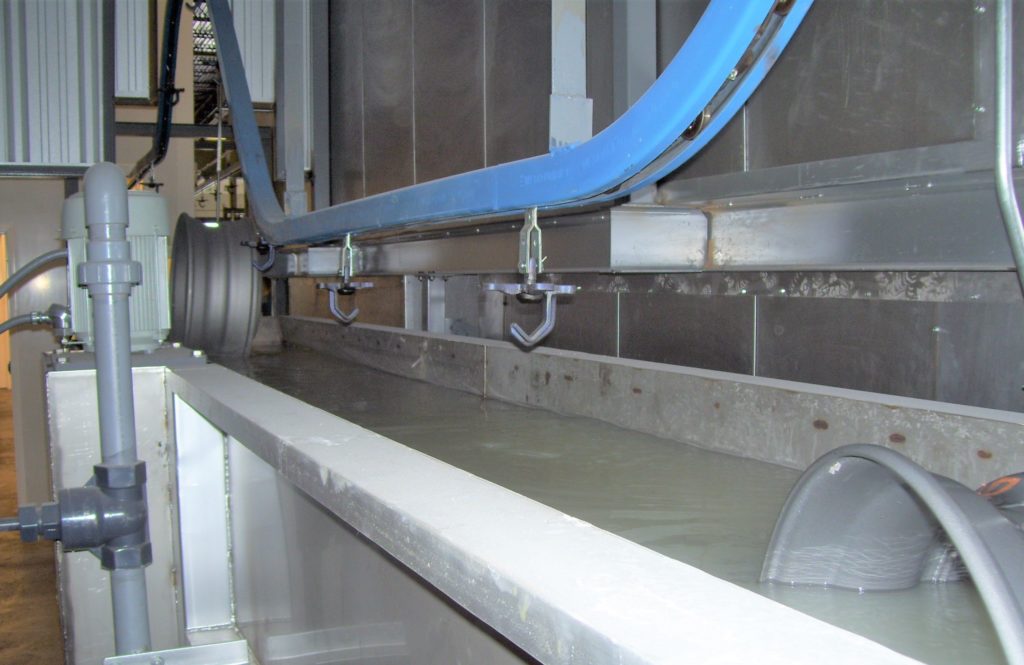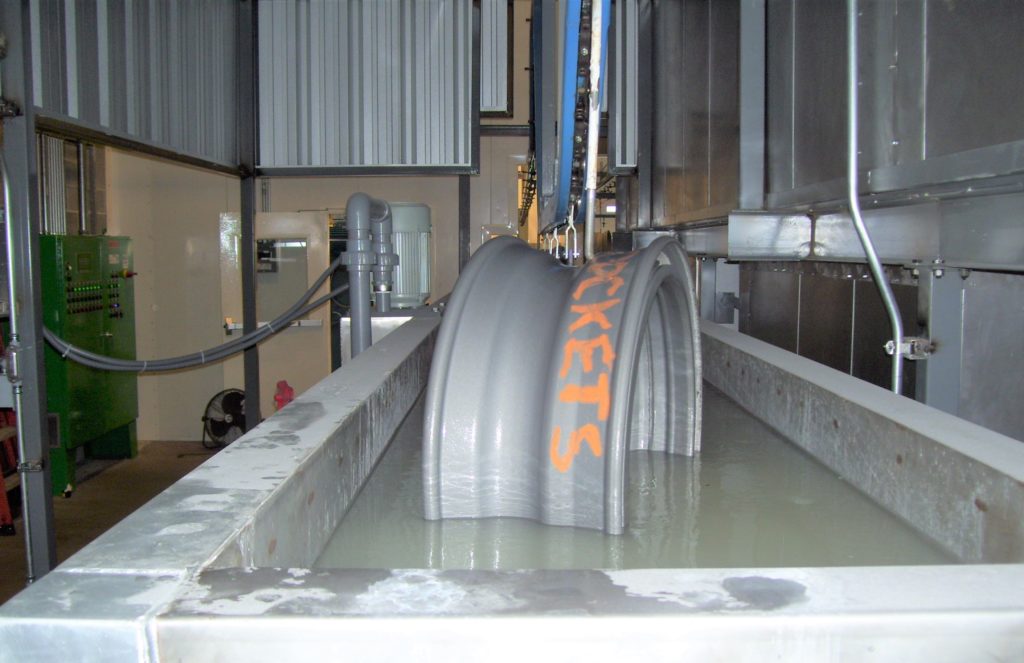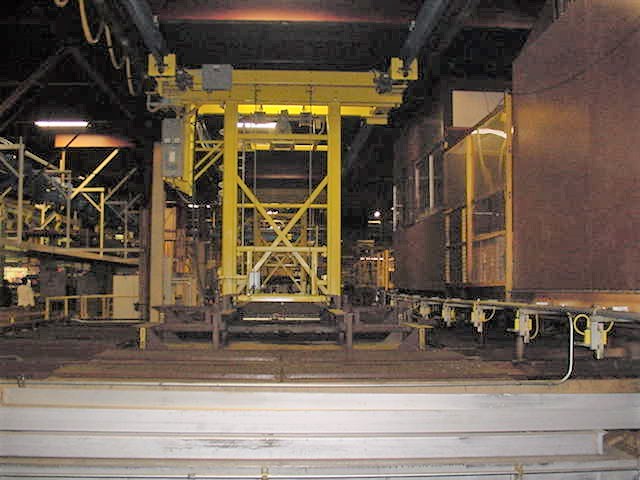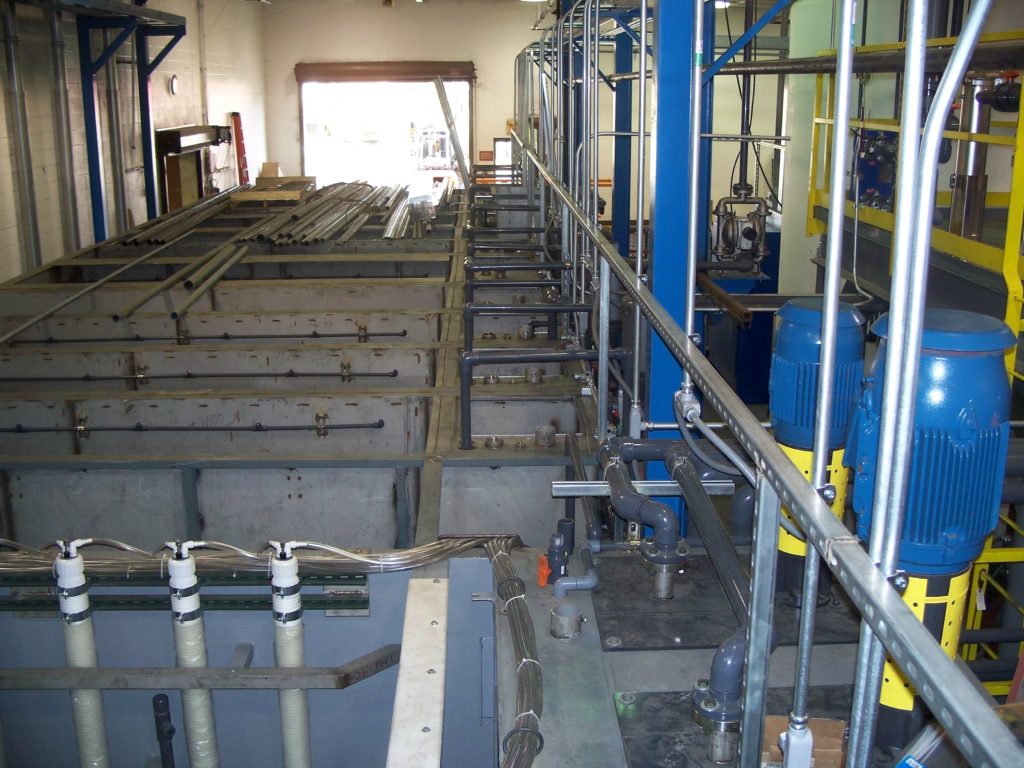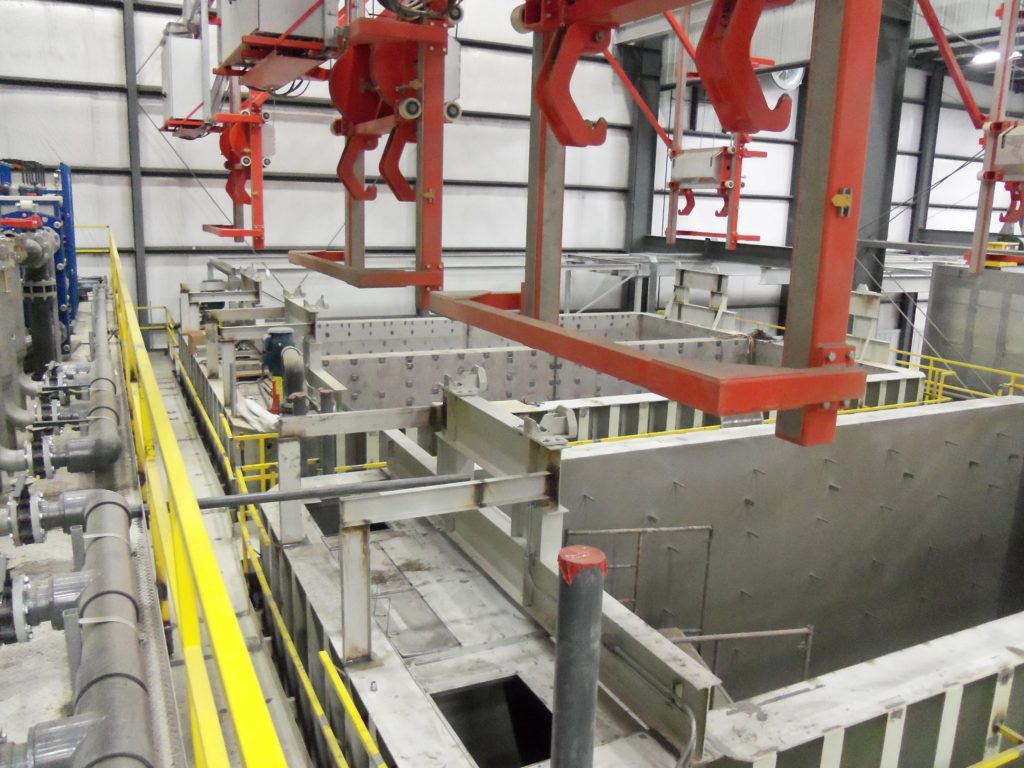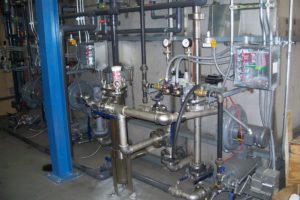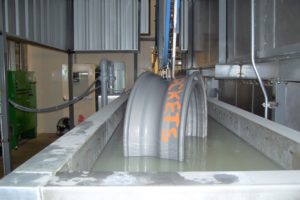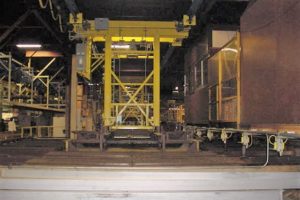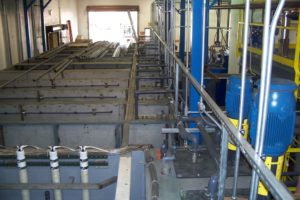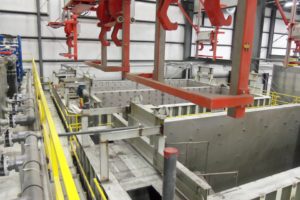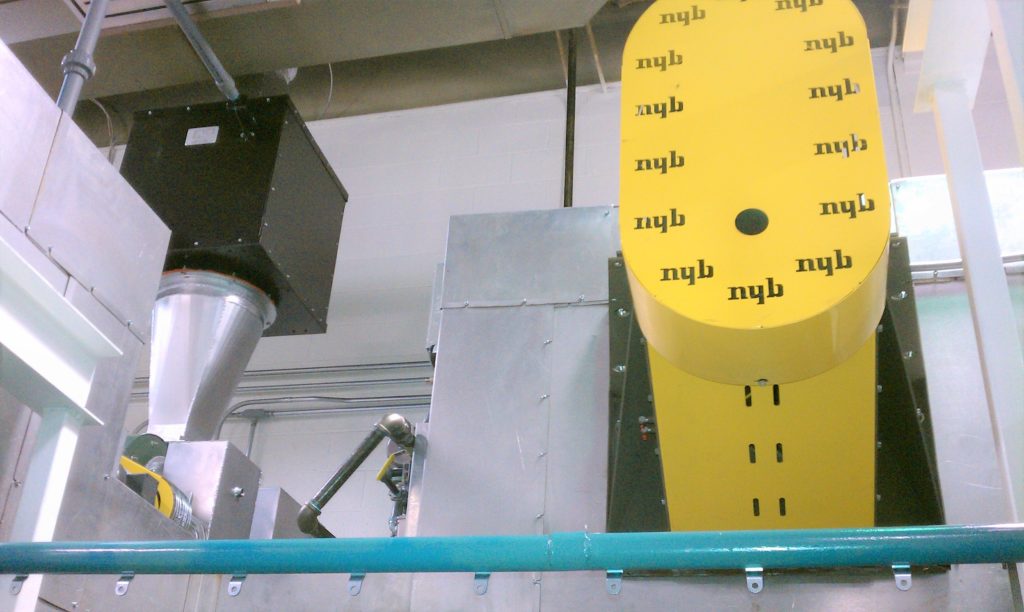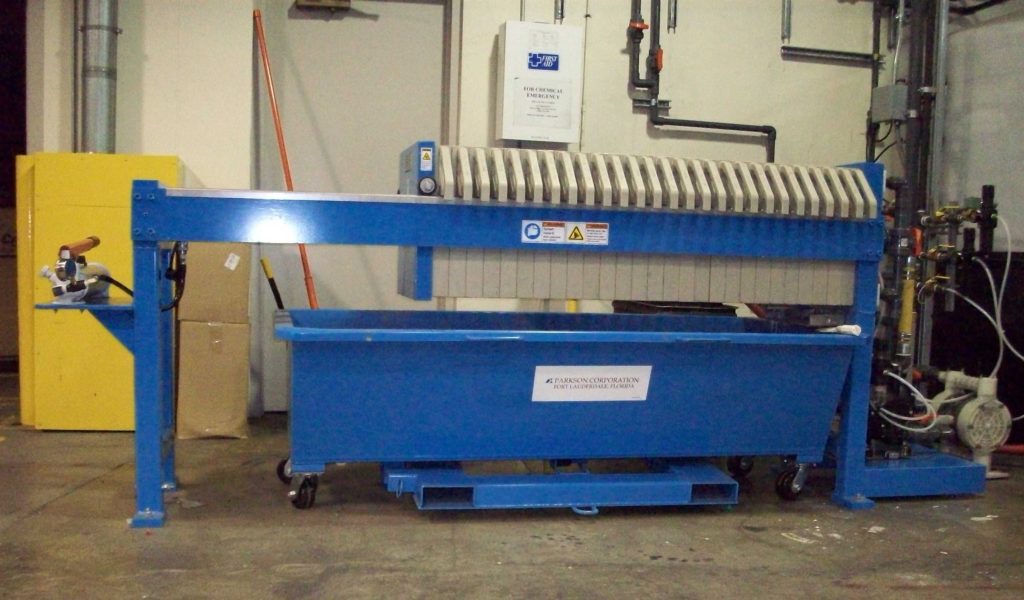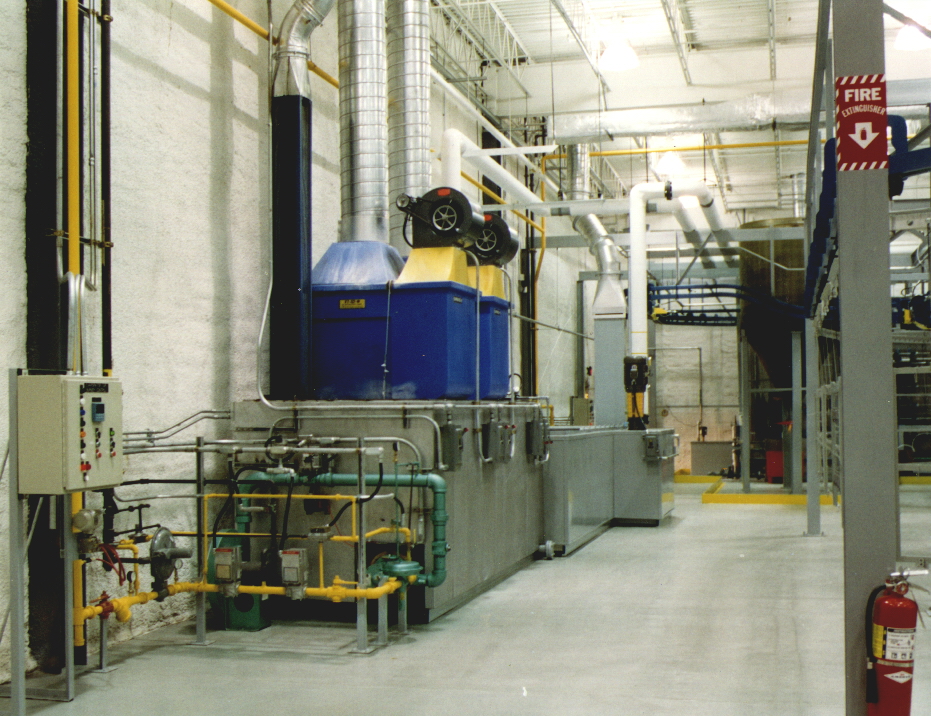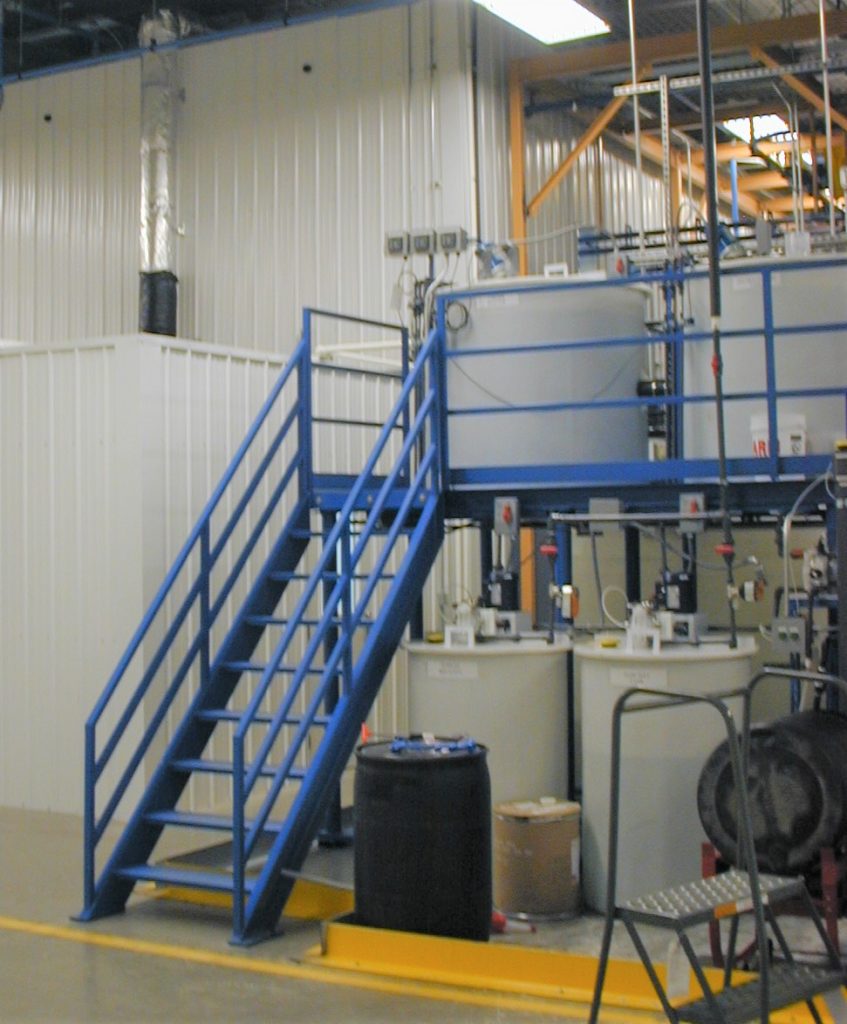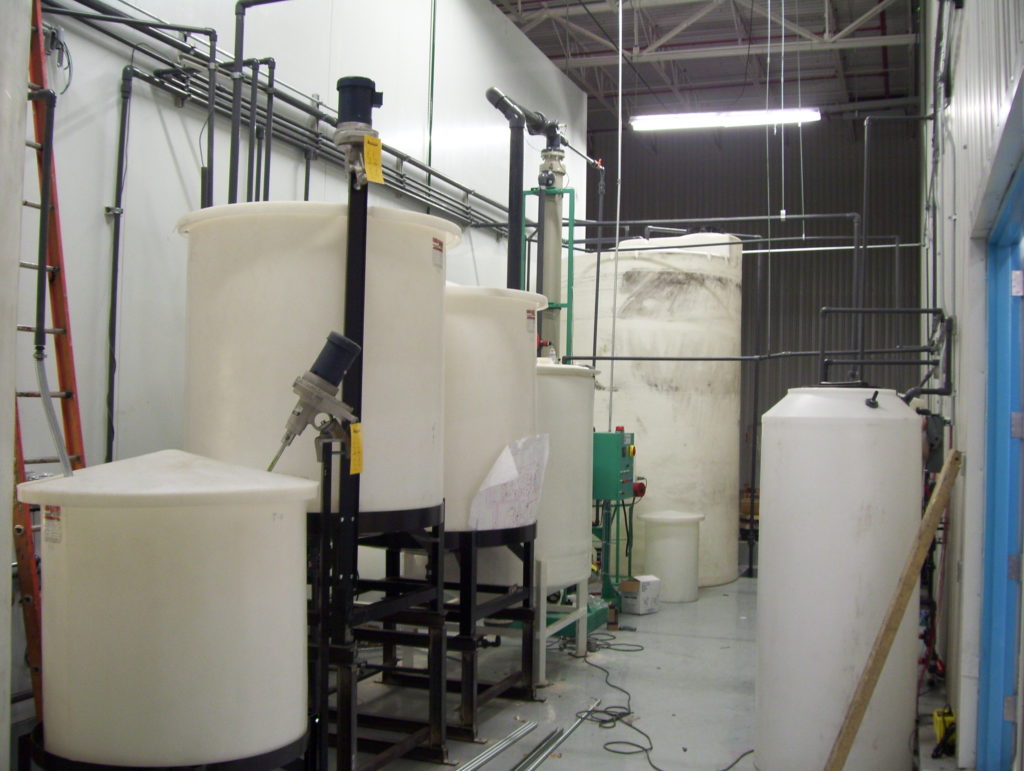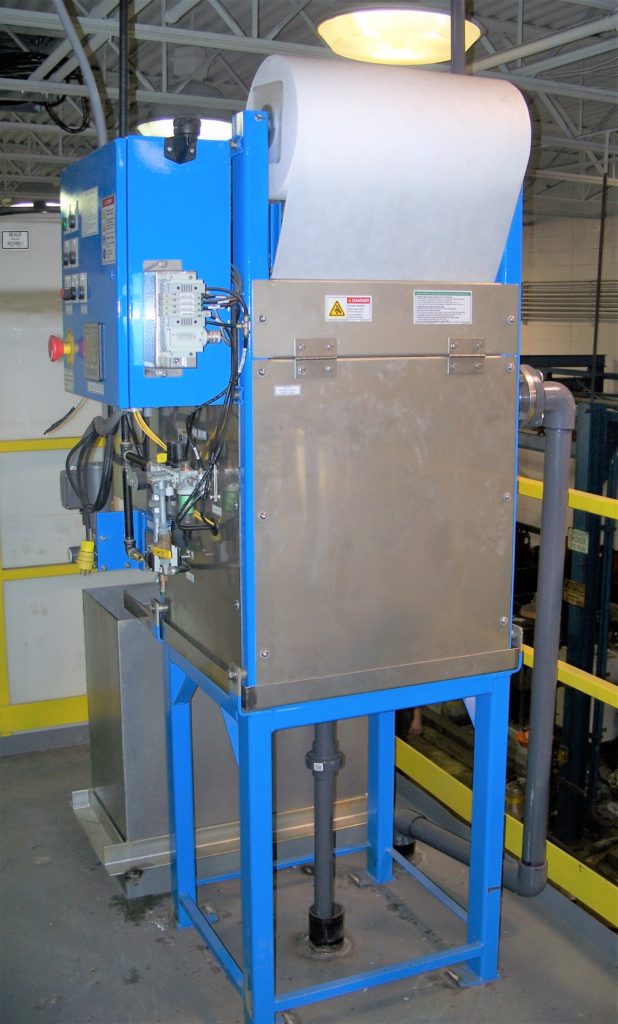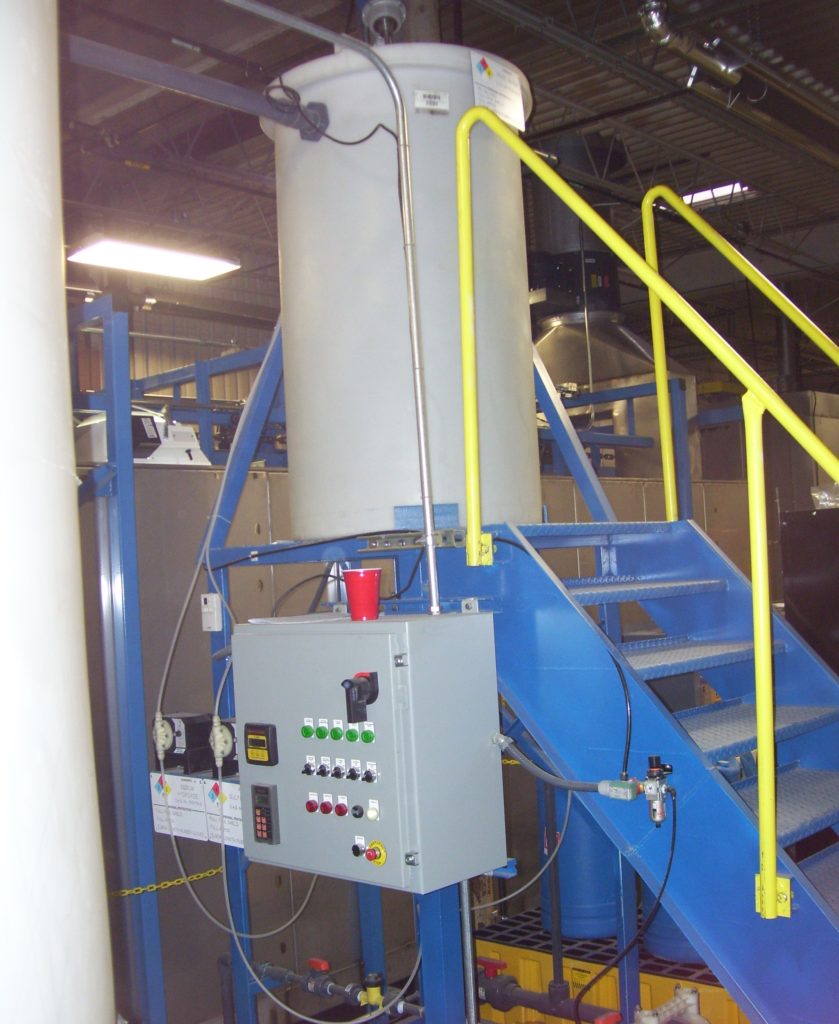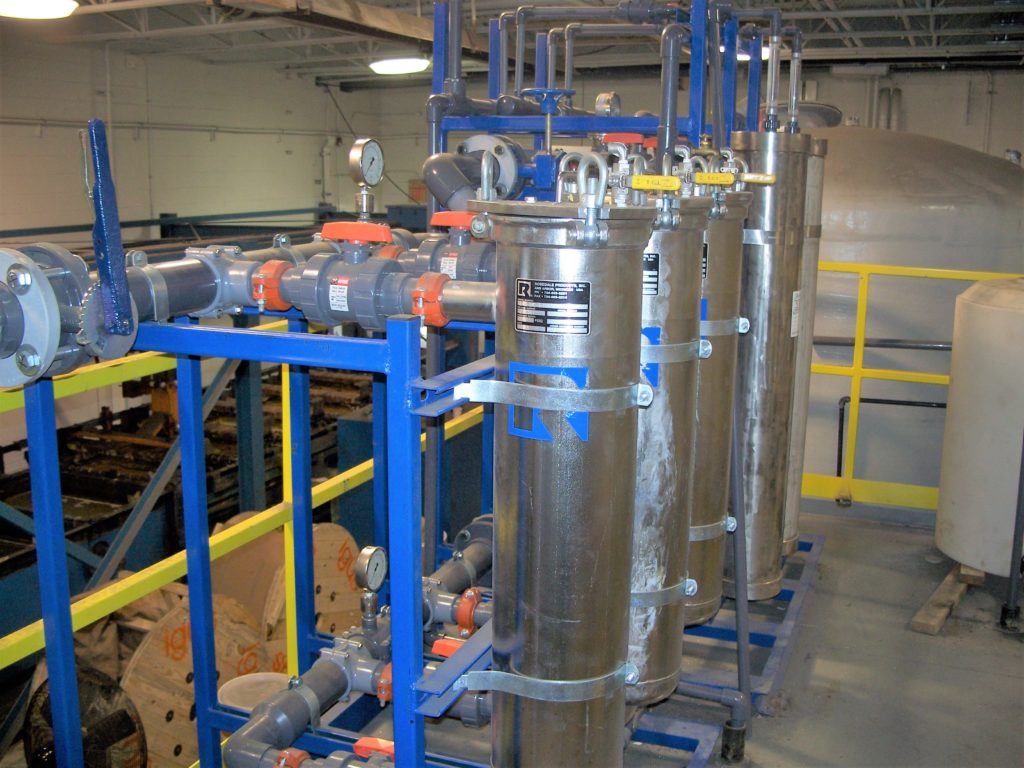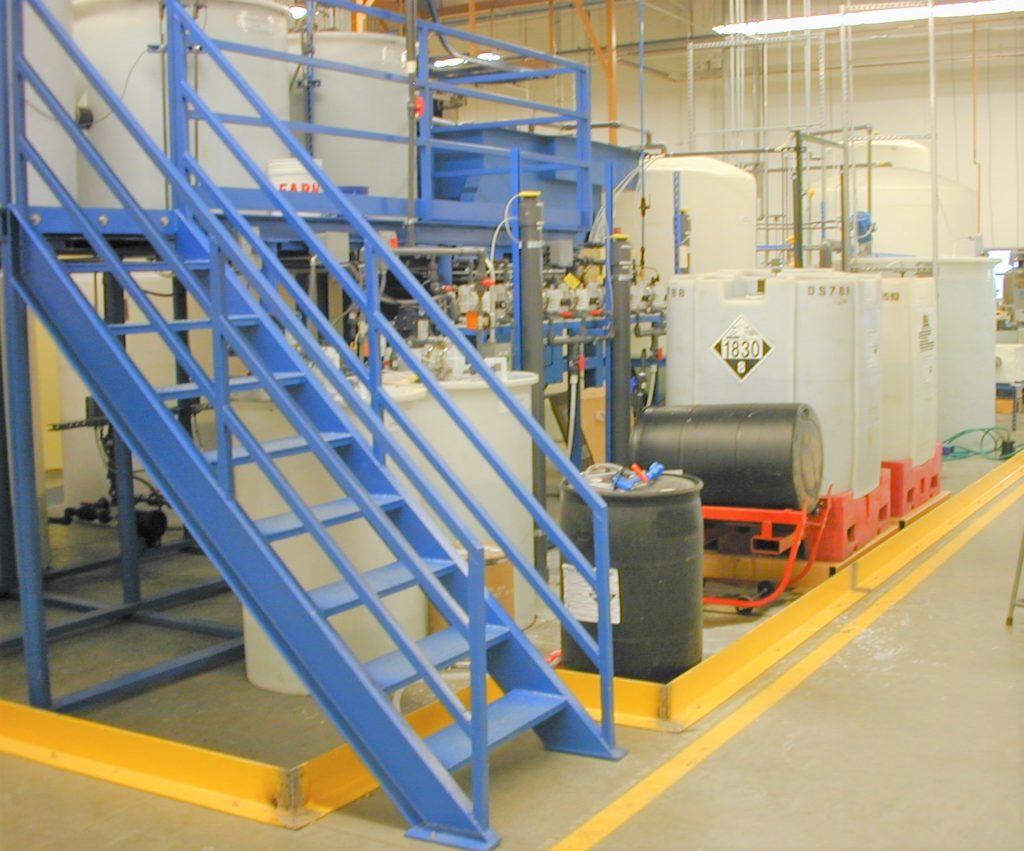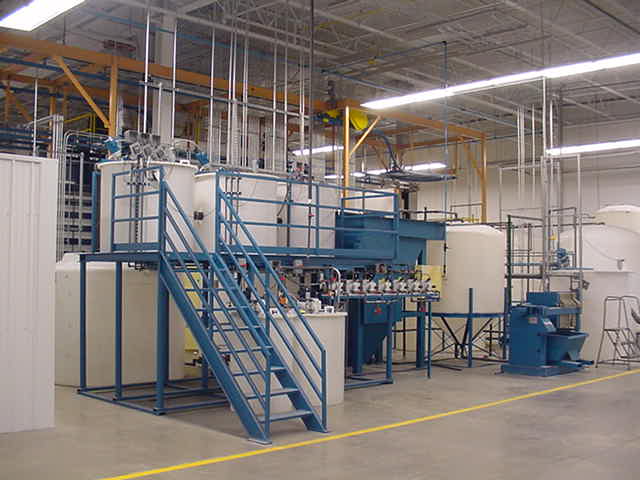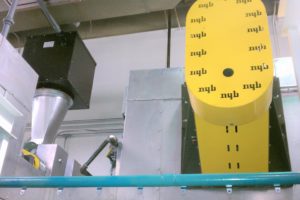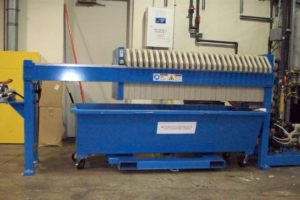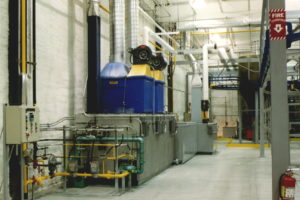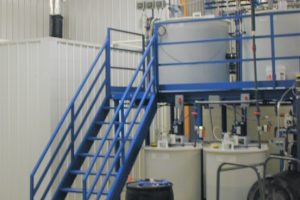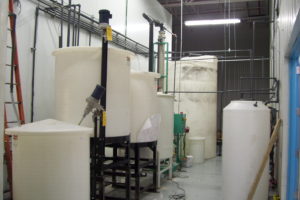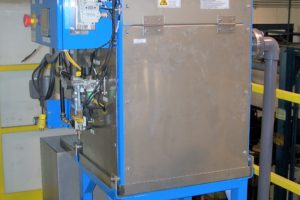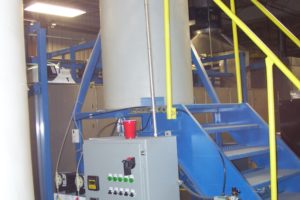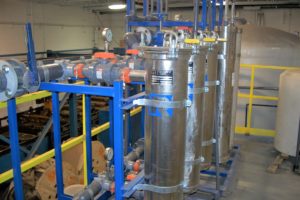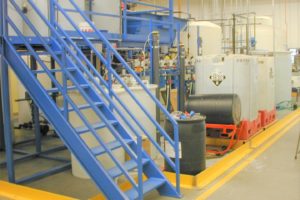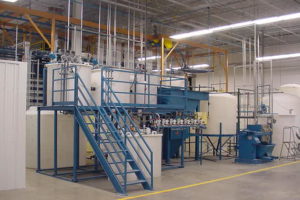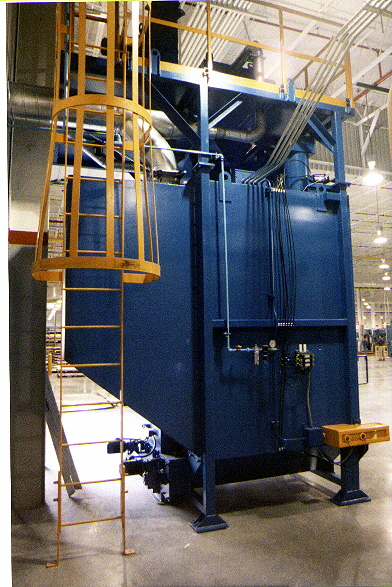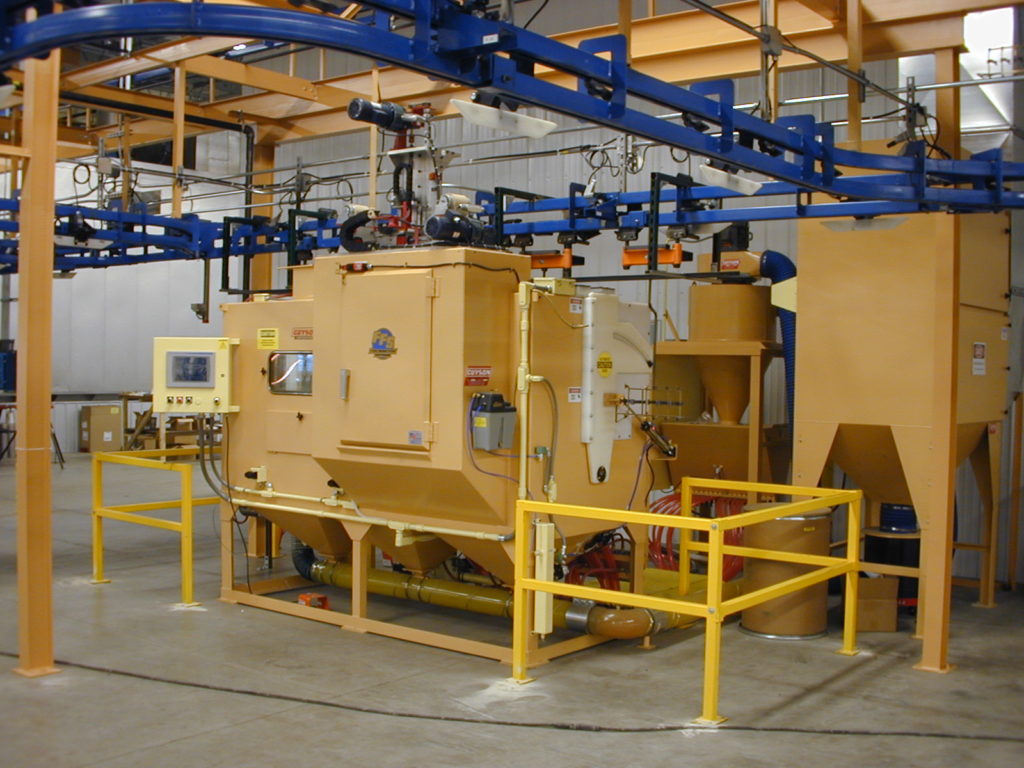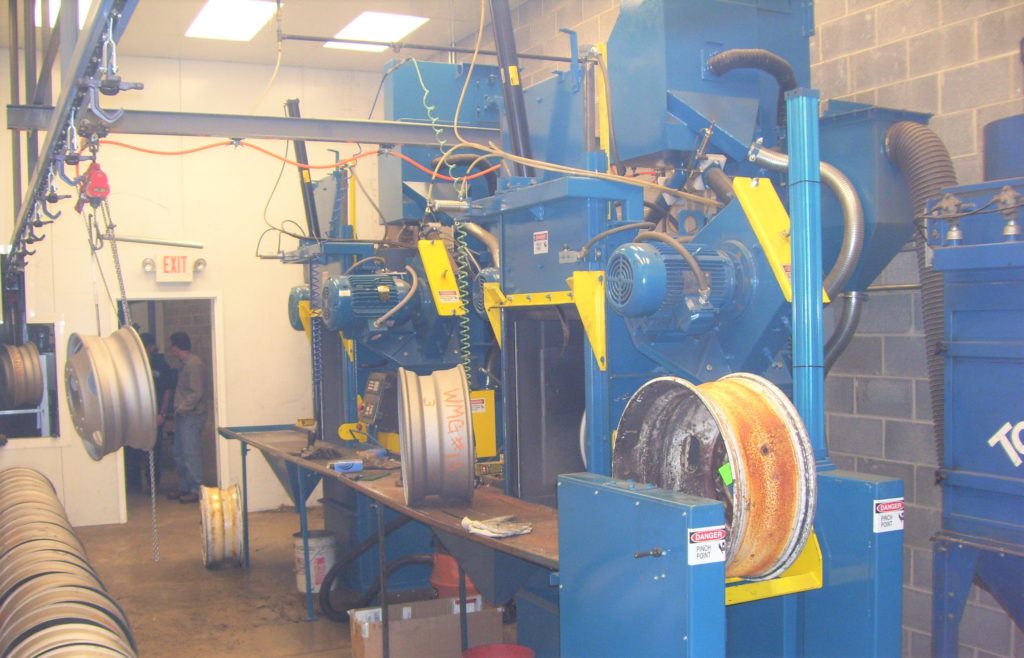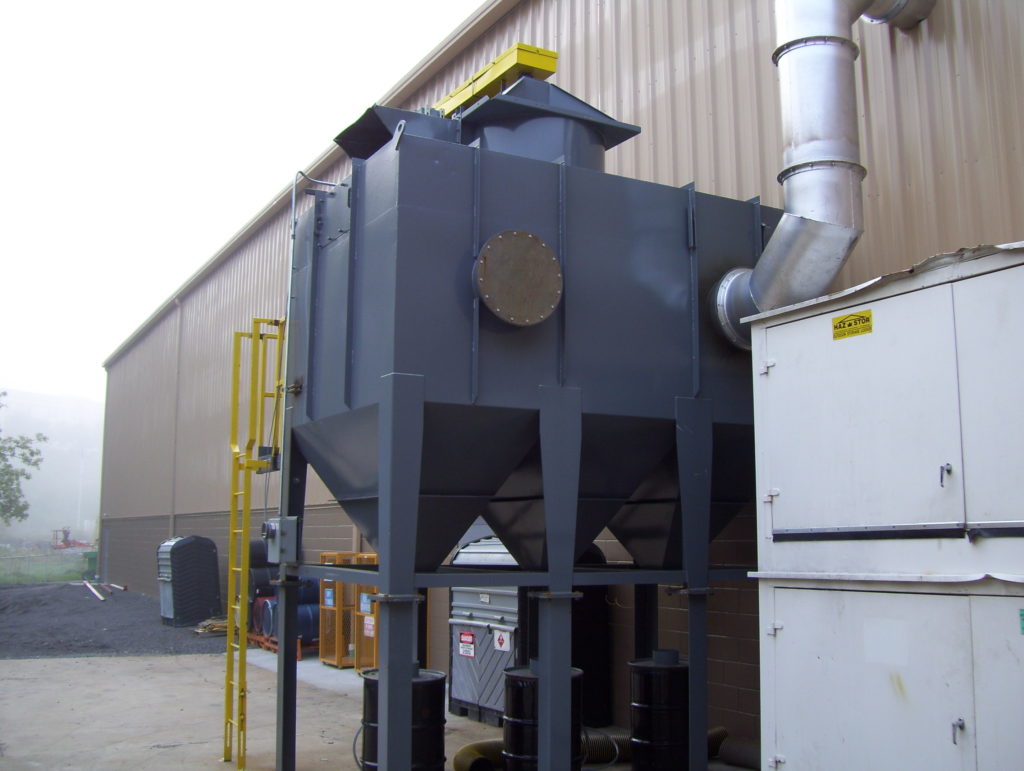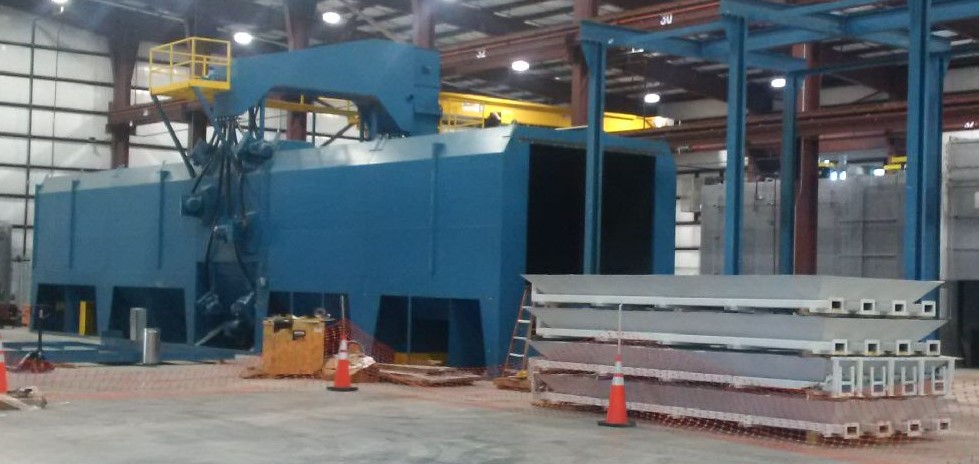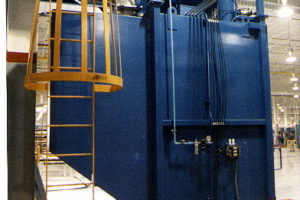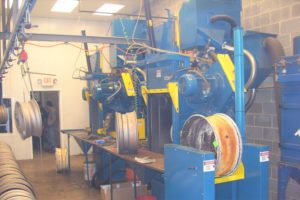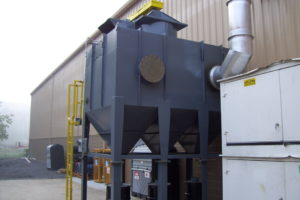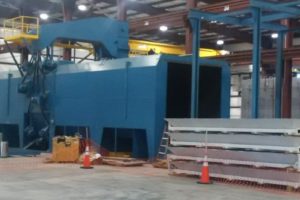SURFACE PREPARATION EQUIPMENT
As its name implies, the surface preparation process prepares the metal or plastic part surface prior to painting. It is considered as important to the overall performance of the paint as the paint itself. In general, surface preparation is accomplished by media blasting or by applying a chemical treatment, or sometimes both.
HERR designs and builds our own line of industrial spray, cascade and dip systems, typically termed “washers”. The washer design is done in concert with your chemical vendor’s recommendation to insure the optimal chemical performance and, ultimately, paint performance. Generally, the chemical vendor will test your parts and recommend the number of stages, the time and temperature in each stage, which chemical to use, the materials of construction and possibly other equipment design features such as nozzle selection, filtration, heat exchangers, chemical delivery, etc.
SPRAY WASHERS
Spray washers can be single or multi-stage and provide both chemical action as well as physical impingement. A pump on each stage circulates solutions from a tank beneath the spray containment housing to nozzles located inside the housing. Parts are sprayed as they pass through the housing on a conveyor, or in the case of indexing washers, the parts are stationary when inside the washer and the piping reciprocates to provide the spray coverage.
The key design elements of a spray washer are 1) number of stages; 2) time and temperature in each stage; 3) conveyor line speed and 4) part size. The part perimeter determines the number of nozzles on each riser set for full coverage. The time and line speed then determine the number of risers in each stage. The spray rate of each nozzle in gallons per minute (gpm) times the number of nozzles in each stage provides the spray pump volume. HERR then uses a minimum of 3 x the pump size for the tank volume to prevent excess chemical sheer and assure sufficient buffer to avoid cavitation.
Our washers use heavy-duty stainless or composite materials and industry standard mechanical components built to last many years using today’s aggressive chemical formulations.
Operator-friendly features are designed to promote safety and efficient maintenance. Features include:
- Brightly lit interior from ceiling lights
- Slip-fit easy-clean level controls
- One-valve flush risers
- Identical pump screens
- Tank access from both sides of housing
- Quick disconnect nozzles and risers
- Vertical pumps requiring no packing or seals required
- Steps with platforms at each door with GFI protected outlet
- Optional plate and frame heat exchangers to eliminate in-tank immersion tubes
Energy efficiency and process flexibility are also factored into the washer design with VFD control on the pumps, high efficiency tube burners, waste heat utilization from nearby ovens, insulation,
CASCADE WASHERS
Cascade washers are a variant of spray washers that substitute the nozzles with a cascade weir at the top of the washer housing. Solutions flow down the length of the part for treatment. This style washer is typically used for tall extrusions (up to >24′) with little or no lateral protrusions that could “break” the water flow. Eliminating difficult nozzle maintenance within a narrow, extremely tall housing promotes safety and maintenance efficiency.
IMMERSION WASHERS
Immersion tanks are used in conjunction with dip paint systems like e-coat and autodeposition (a-coat) and can be indexing (vertical entry/exit) or continuous (inclined entry/exit). Similar to spray washers, immersion washers can be a single stage up to twelve stages. Solution tanks are circulated and mixed with a vertical pump and educator piping to avoid aerosols possible with diffused air mixers. Tanks can be heated directly with immersion tubes or indirectly with platecoil or plate and frame heat exchangers. Push-pull lip vents are normally provided on heated stages to remove vapors. Fixed or reciprocating spray nozzles in the tank is offered as an option for impingement along with the standard options listed below for all HERR washers.
STANDARD OPTIONS
HERR’s washers can be provided with numerous options to assist the process including:
- Reverse Osmosis (RO) or deionized water (DI) systems
- Acid scrubbers
- Bag filters and floor “sweep” piping
- Coalescing oil filters
- Iron removal
- Wastewater treatment
- Zero discharge
- Sludge removal
- Microfiltration (extends bath)
- Automatic chemical addition
BLASTING
Blasting physically removes rust, laser edges and mill scale and imparts a profile for paint to “adhere”. It can be accomplished automatically on a conveyor line or manually in a batch system but is generally limited to heavier parts not prone to deformation. HERR works with industry partners to incorporate blasting equipment into a turnkey paint system.



